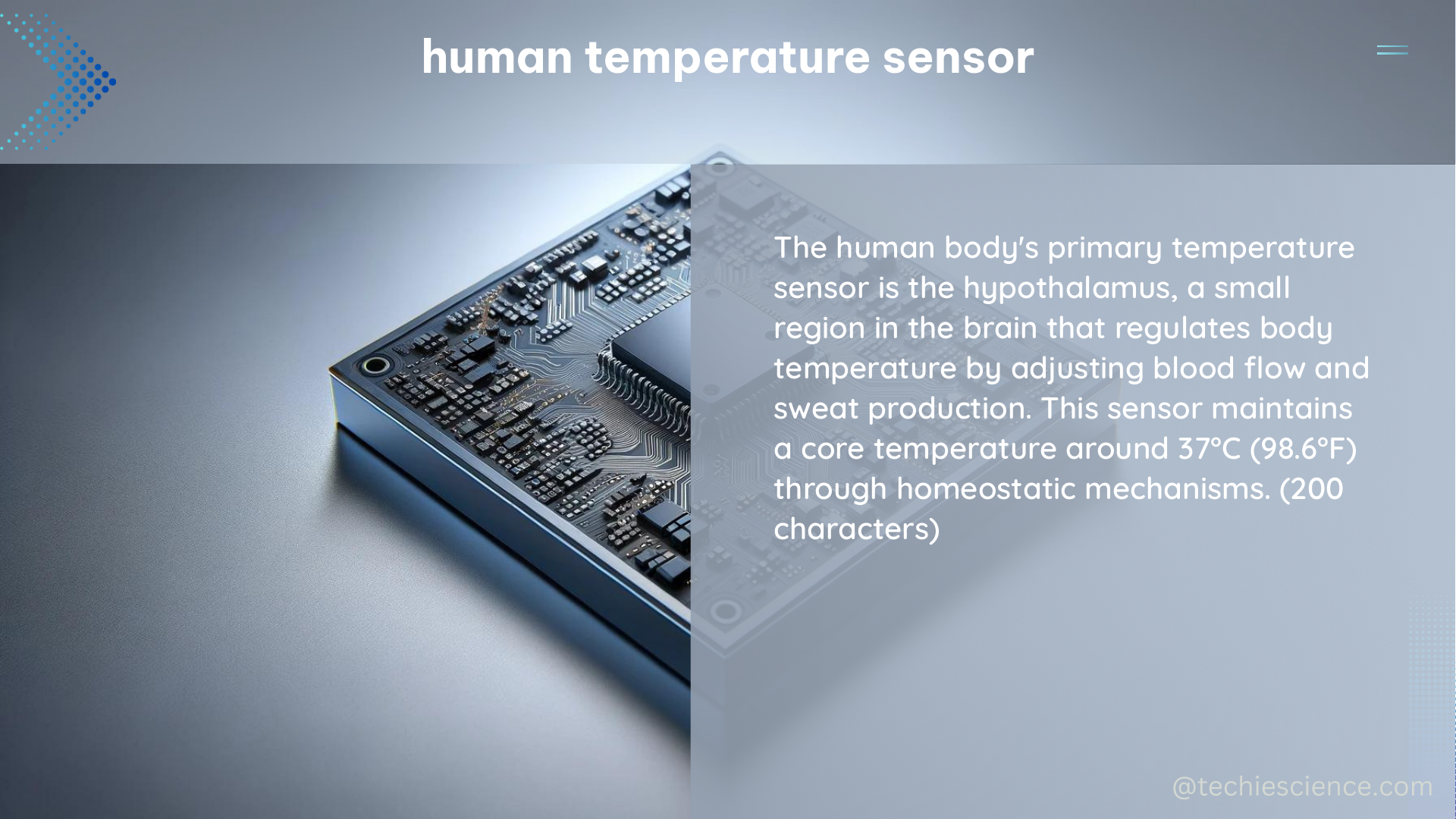Human temperature sensors are essential devices used to measure and monitor body temperature, a crucial vital sign in medical diagnostics and personal health monitoring. These sensors employ various technologies to detect and record temperature changes, providing valuable data for healthcare professionals and individuals alike. In this comprehensive guide, we will delve into the technical specifications, hands-on details, and a step-by-step DIY approach to building your own human temperature sensor.
Technical Specifications of Human Temperature Sensors
Accuracy
The accuracy of a human temperature sensor is paramount for reliable measurements. For clinical applications, the American Heart Association recommends a temperature measurement accuracy of ±0.1°C. However, for general use, a temperature sensor with an accuracy of ±0.3°C may be sufficient, providing a balance between precision and cost-effectiveness.
Response Time
The response time of a temperature sensor is the time it takes for the sensor to reach 63.2% of the final temperature value after a temperature change. A fast response time, typically in the range of 100-500 milliseconds, is essential for capturing rapid temperature fluctuations, ensuring timely and accurate readings.
Temperature Range
The temperature range of a human temperature sensor should cover the typical human body temperature, which is approximately 36.5-37.5°C. Some sensors may have a wider temperature range, extending from -70°C to +380°C, to accommodate extreme environmental conditions or specialized applications.
Power Consumption
For wearable or portable temperature sensors, power consumption is a critical factor. Low power consumption, often in the range of milliwatts, ensures a longer battery life and reduces the frequency of recharging or replacing batteries, enhancing the sensor’s overall usability and convenience.
Data Transmission
Human temperature sensors can transmit data via wired or wireless connections. Wireless transmission, such as Bluetooth or Wi-Fi, provides greater mobility and ease of use but may consume more power than wired connections. The choice between wired and wireless data transmission depends on the specific application and user requirements.
DIY Human Temperature Sensor with Arduino

For those interested in building their own human temperature sensor, an Arduino-based solution is a popular and accessible choice. The MLX90614 infrared temperature sensor, when connected to an Arduino, can provide accurate temperature measurements with a response time of around 100ms and a temperature range of -70 to +380°C.
Materials Needed
- Arduino board (e.g., Arduino Uno, Arduino Nano, or Arduino Mega)
- MLX90614 infrared temperature sensor
- Breadboard
- Jumper wires
- Computer with the Arduino IDE installed
Step 1: Connect the Sensor
Connect the MLX90614 sensor to the Arduino board using the breadboard and jumper wires. The sensor’s VCC pin should be connected to the Arduino’s 3.3V pin, the GND pin to the GND pin, and the SDA and SCL pins to the corresponding SDA and SCL pins on the Arduino board.
Step 2: Program the Arduino
Write a program in the Arduino IDE to read temperature data from the MLX90614 sensor and display it on the serial monitor. The following code snippet provides a basic example:
#include <Wire.h>
#include <Adafruit_MLX90614.h>
Adafruit_MLX90614 mlx = Adafruit_MLX90614();
void setup() {
Serial.begin(9600);
mlx.begin();
}
void loop() {
float ambientTemp = mlx.readAmbientTempC();
float objectTemp = mlx.readObjectTempC();
Serial.print("Ambient Temperature: ");
Serial.print(ambientTemp);
Serial.println("°C");
Serial.print("Object Temperature: ");
Serial.print(objectTemp);
Serial.println("°C");
delay(1000);
}
Step 3: Test the Sensor
Place the sensor close to your skin and observe the temperature readings on the serial monitor. Ensure that the sensor is providing accurate and consistent readings by comparing the measurements to a known reference, such as a clinical thermometer.
By following these steps, you can build your own DIY human temperature sensor using an Arduino and the MLX90614 infrared temperature sensor. This project allows you to explore the technical aspects of temperature measurement, gain hands-on experience, and potentially customize the sensor to suit your specific needs.
Conclusion
Human temperature sensors are essential tools for monitoring and managing health, providing valuable data for medical professionals and individuals alike. By understanding the technical specifications, such as accuracy, response time, temperature range, power consumption, and data transmission, you can select or build a human temperature sensor that meets your specific requirements.
The DIY approach using an Arduino and the MLX90614 sensor offers a cost-effective and customizable solution for those interested in exploring the world of temperature measurement. By following the step-by-step guide provided, you can create your own human temperature sensor and gain a deeper understanding of the underlying technology.
Remember, the accuracy and reliability of temperature measurements are crucial, especially in clinical settings. Always consult with healthcare professionals and follow recommended guidelines when using temperature sensors for medical purposes.
References
- American Heart Association, “Standardization and Interpretation of the Body Temperature,” Circulation, vol. 132, no. 16, pp. 1543-1548, 2015.
- Texas Instruments, “How to Choose a Temperature Sensor for Your Design,” Literature Number SLVA696, 2014.
- Analog Devices, “Understanding Thermocouples and RTDs,” Application Note AN-1035, 2018.
- World Health Organization, “Body Temperature,” Fact Sheet No. 293, 2018.
- Bildr, “MLX90614 Infrared Thermometer with Arduino,” 2011. https://bildr.org/2011/02/mlx90614-arduino/

The lambdageeks.com Core SME Team is a group of experienced subject matter experts from diverse scientific and technical fields including Physics, Chemistry, Technology,Electronics & Electrical Engineering, Automotive, Mechanical Engineering. Our team collaborates to create high-quality, well-researched articles on a wide range of science and technology topics for the lambdageeks.com website.
All Our Senior SME are having more than 7 Years of experience in the respective fields . They are either Working Industry Professionals or assocaited With different Universities. Refer Our Authors Page to get to know About our Core SMEs.